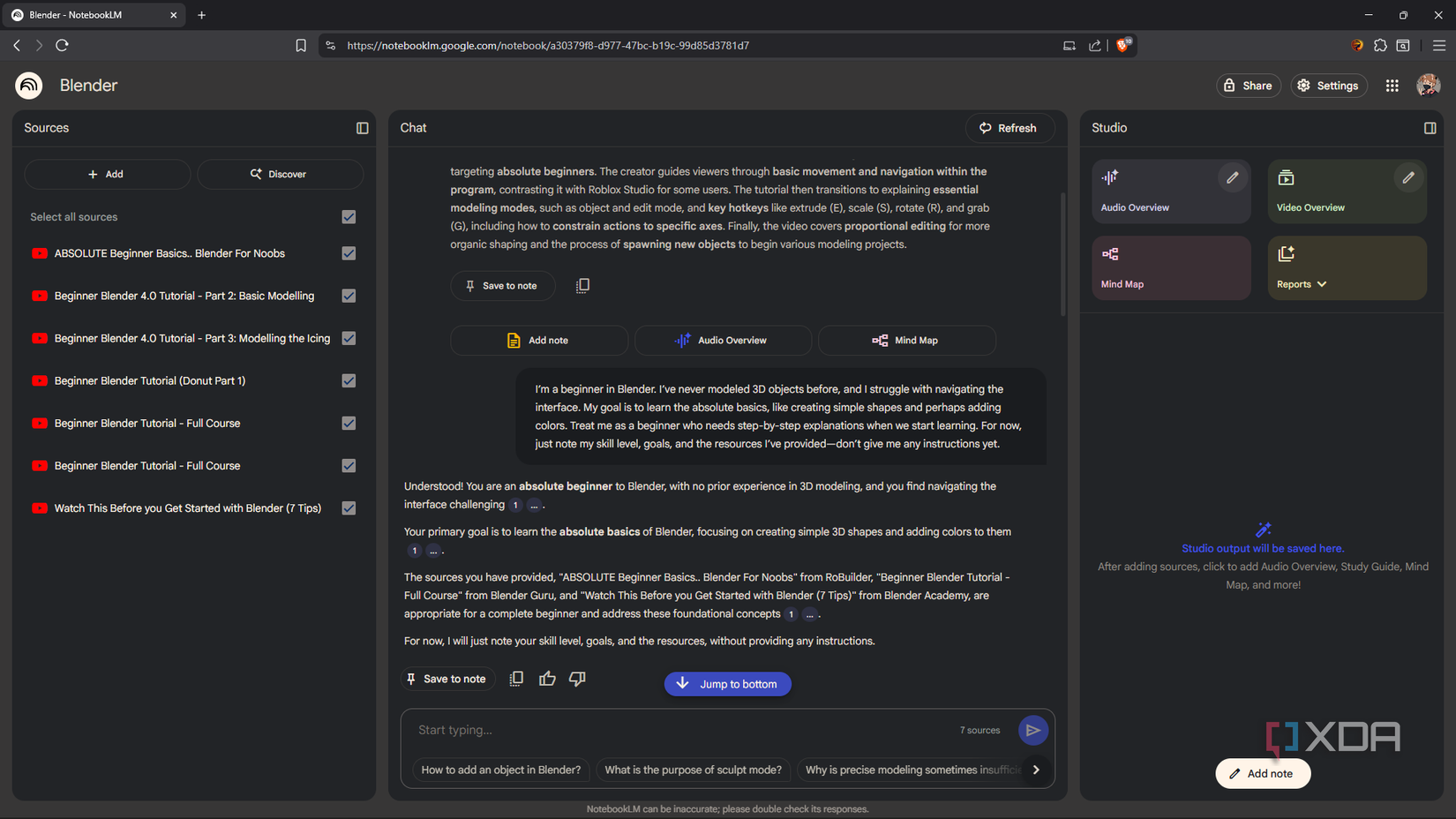I’ve cycled through dozens of free tools in my life, from design apps and image editors to productivity trackers and random open-source projects I thought would change my life. But most of them end up half-forgotten because they’re either too limited to get much use out of or too clunky to master. Instead of tossing them aside, I wondered if pairing them with an AI tool could breathe new life into them. And it did.
NotebookLM doesn’t change how these apps work, but it does plug in the gaps where some tools fall short, and handles the parts of my brain that struggle with other tools. It can pretty much whip up a manual for a complicated graphics tool, or simply help me make sense of my own notes. Here are the free apps I kept dodging and underestimating, and how NotebookLM turned them into tools I can’t imagine dropping now.
Google Keep
From disorganized to structured
I’ve written extensively about how Keep + NotebookLM ended up being a fantastic pairing. I never took enough advantage of Google’s free offerings, so this duo gave me a new appreciation for the tech giant. Keep on its own is just a digital sticky note board in different colors with a search function. This is great for jotting things down, but not so much for deeper workflows.
That’s why pairing Keep with NotebookLM took it a level up. Suddenly, my random scribbles became searchable in context. I can get structured summaries on demand and weave them into something coherent. I’ll often jot down an entire day’s thoughts within one Keep note, and naturally, it ends up being a randomized list of topics — NotebookLM helps me identify what is a grocery item and what is a design resource within seconds, plus sorts them in that order for me.
Instead of endlessly scrolling through my notes and trying to remember where I stashed my thoughts, NotebookLM gives me clarity. Together, they’re way more than the sum of their parts.
Calibre
It’s like walking through a library with a guide
I’ve had Calibre sitting on my computer for years, mostly as a way to store eBooks I never actually got around to reading. The filtering and sorting features are solid, plus I appreciate that it comes with a comprehensive converter built in. But it does feel like a bit of a glorified bookshelf.
Pairing it with NotebookLM shifted the experience with the app and turned it into something more useful for me. Sure, I can filter by title, tags, or authors in Calibre, but putting that information into a notebook makes it easy to keep track of the types of books, authors, and genres I tend to gravitate toward, because NotebookLM can give me context-aware overviews.
I can take it a step further and have NotebookLM “read” a book for me. It can give me a summarized overview, as long or short, and in whichever format I want. This helps me determine whether a book is worth keeping in Calibre, or whether it’s time to let it go. To do this, just convert the book to a PDF first, then drop it straight into NotebookLM.
Zotero
From reference manager to idea engine
This is an app I barely bothered trying on its own until I started using NotebookLM with my other productivity stack. My first impression of Zotero is that it’s great for saving papers and resources. It also has some impressive organizational functionality. But, my brain doesn’t always recognize a great management app; it just gets overwhelmed by the amount of data it sees. So to actually get myself to use this mountain of material in Zotero, I tried pairing it with NotebookLM.
By transferring my references from Zotero into a notebook, I can ask the AI to explain, compare, and condense them. So instead of rereading a PDF three times to find a key point, I just ask for a summary. For research-heavy writing, or any other project really, this combo can save hours. Zotero handles the storage and organization, while NotebookLM handles the digestion.
Blender
A tool I never thought I’d master
I love design tools of all types, from RAW photo editors to UI prototyping software. 3D modeling, on the other hand, has never been my forte, and Blender’s intimidating interface doesn’t exactly help. That was until I decided to pair it with NotebookLM. Instead of drowning in scattered documentation and YouTube tutorials, I dropped all of it into a notebook, and NotebookLM helped me get started by summarizing the steps in a way that even a six-year-old could follow. It managed to cut through all the noise and detours that tutorials usually have, and I’ve successfully created my first Blender donut model.
I make a habit of creating something every day, whether it’s a hand-drawing or a wonky web page design. And now, Blender is my go-to tool for learning and making new creations.
NotebookLM made these apps stick
On their own, tools like Zotero and Calibre are solid, but not life-changing. I could go forever without touching them. But paired with NotebookLM, each one gets elevated into something I actually want to use every day. The AI doesn’t give me more features, it just unlocks the ones I already had access to but never fully utilized.
Source link



